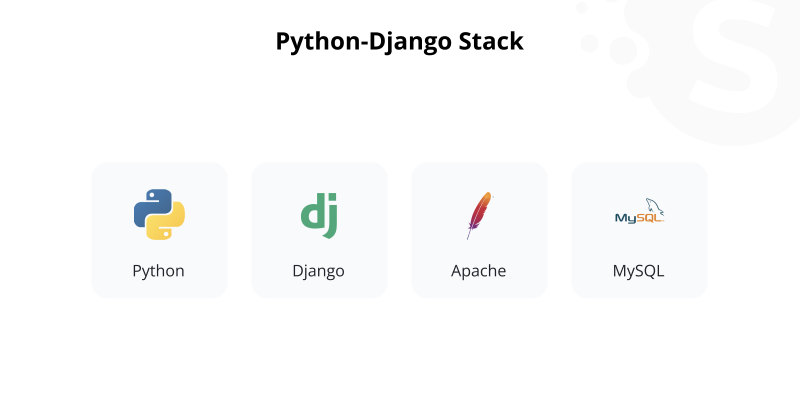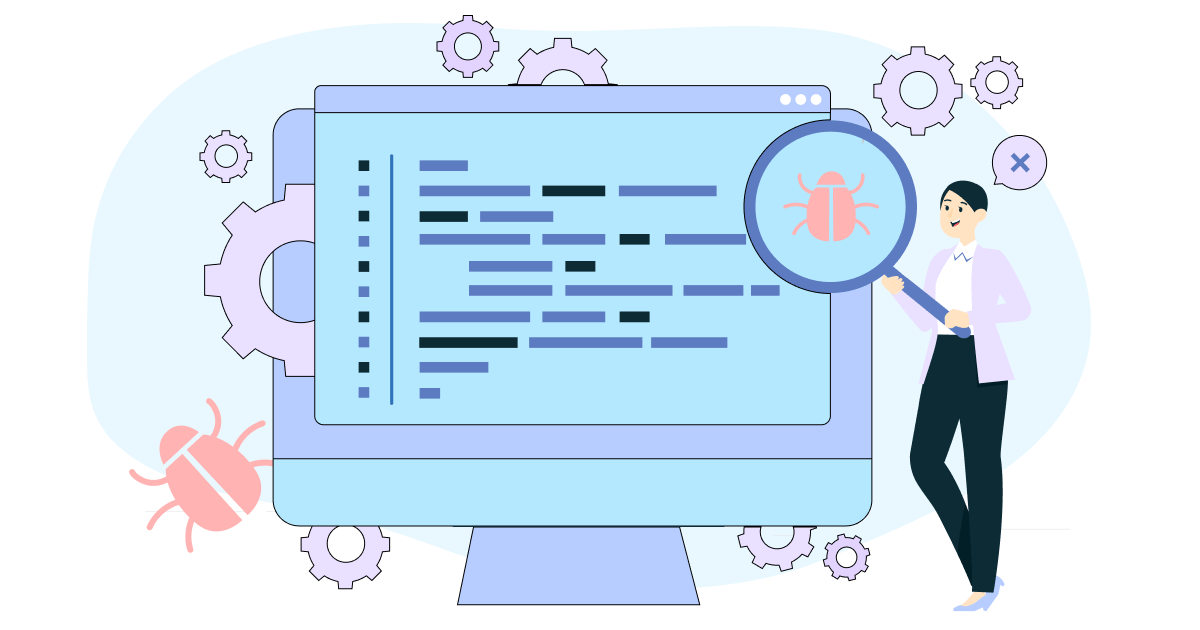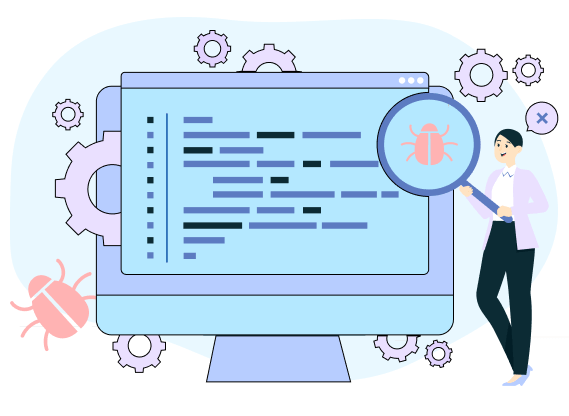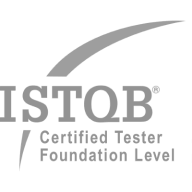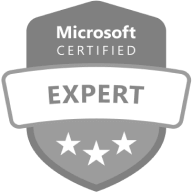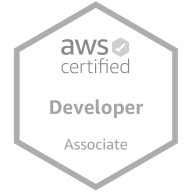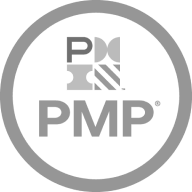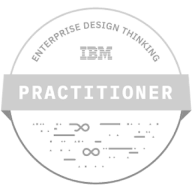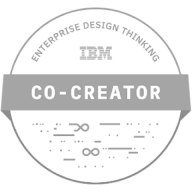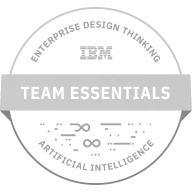
How to Choose the Best Technology Stack for Web Application Development: 10 Helpful Tips
Want to know more? — Subscribe
You can’t cook a great dish with junk ingredients, can you? The same goes for software. Thus, choosing the best stack for web development is a crucial first step in the entire project lifecycle. It's a backbone for tailoring the product to your goals, strengthening its performance, and increasing the productivity metrics of the developer in charge of the project.
The right tech stack of a website ensures that your product is qualitative and meets customers' expectations. Choosing the proper technology stack for web development aligned with your product needs before the start prevents many issues. Making a smart decision at the beginning spares you the need to fix or update the product later. Surely, you can save a pretty significant budget sum and time.
Softermii always selects the optimal development stack for clients' needs. For example, for SoundIt, Radiant, and Streamotion, we have chosen technologies to enable seamless audio and video streaming.
This article reveals the main tips that can guide you on how to select a technology stack. You'll find out up-to-date information about current trends. Moreover, we'll talk about the front-end and back-end development and factors to put in place before considering an ideal web development tech stack to choose from.
Read Also: How much does it cost to hire a back-end developer
Tech Stack and Web Development Process
In website and web app development, there is usually the client-side (front-end) and server-side (back-end) parts of a tech stack.
Here is a basic presentation of these two sides workflow:
Each web app consists of layers that are built atop the one below, forming a stack. Because of this, the components of the stack are extremely interdependent. You can create your web application from a variety of tools, frameworks, and programming languages.
But now, there is such a wide choice that it can be difficult to define what is perfect for your idea. And in order to understand what web development technologies are used to develop web applications, you need to study a number of relevant content.
Read Also: How and Why Integrate Zoom Video Conferencing SDK in Your Website or App
The choice of which technology to use for either front-end or back-end development is then dependent on a number of factors. Let's start with the front-end toolkit for product development.
You can delegate this work to a software development company that can choose the most relevant web app tech stack.
Front-end Tech Stack for Web Development
Front-end, e.g., from client-side web development, refers to everything users see on their screens.
According to Statista, as of 2022, JavaScript and HTML/CSS were the most commonly used programming languages among software developers worldwide. Over 65 percent of respondents used JavaScript, and just over 55 percent used HTML/CSS.
- HTML, e.g., Hypertext Markup Language is a standardized system used for tagging text files on World Wide Web pages. It is used to input font type, color, graphics, and hyperlink effects. It describes the structure of Web pages using markup.
- CSS means Cascading Style Sheets. It is a style sheet language that describes how the document written in HTML will be displayed on the users' screens. As the name implies, it is useful for styling the outlook of a markup text. CSS can reflect HTML code applying easily different fonts, sizes, colors, formats.
- JavaScript is a programming language that is commonly used to create interactive effects within web browsers. With JavaScript code, HTML web pages can become interactive and even personalized for each user.
Front-end makes it possible for the users to interact with the application by applying a different framework with that purpose.
HTML and CSS toolkit
There are several frameworks used for HTML and CSS. Some of them include:
- Bootstrap
- Foundation
- Bulma
- UIkit
- Susy
- Materialize
- Pure
The most popular among them are Bootstrap and Foundation. While Bootstrap uses HTML, CSS, and jQuery libraries to make responsive web pages, Foundation is ideal for developing agile, responsive websites.
JavaScript frameworks for front-end development
Modern web applications use JavaScript in the front-end. The most popular javascript frameworks are Angular, React, and Vue.js (the progressive javascript framework). These trios are the best java framework for web applications.
Read Also: Svelte JS for web app development
Back-end Tech Stack for Web Development
Now, in the case of the back-end or server-side technology stack used in website development, there is a lot more. It consists of the entire business logic of your product work. The back-end executes CRUD operations, an acronym for Create, Read, Update, and Demand operations. The back-end development would include:
The operating system of the development process
- Web server setup
- Database storage setup
- The programming language used
- Web development framework for faster and easier development
According to Stack Overflow’s 2022 developer survey, the best programming languages to professional engineers’ eyes are the following.
The best web development technology stacks include the following:
Wins stack
Windows Internet Naming Service (Wins) is another back-end stack that consists of windows server, internet information services, .Net, and Microsoft SQL Server. It is a system that is used to determine the IP address associated with a particular network computer. The OTRO app was built with the Wins stack.
Xampp (X, Apache, MySQL or MariaDB, PHP, Perl) stack
Xampp toolkit consists of X, Apache, MySQL or MariaDB, PHP, Perl. AMP stack lets you install Apache, MySQL, PHP on your computer, and other useful software. It has been designed to provide you an easy installation experience.

Serverless stack
The serverless computing service provides a platform for users to develop, run, and manage application functionalities without the complexity of building and maintaining the infrastructure typically associated with developing and launching an app. In other words, it enables developers to write and deploy codes, to build and run applications and services without thinking about servers.
With the serverless computing service, you will need fewer servers to run and manage your project. Other benefits to be enjoyed will include:
- You don't need to worry about hosting runtime
- It is cost-effective, as you would only be required to pay what your application consumes
- You don't need to worry about the application has grown in demand because it is scalable
- The provider manages security, software updates
- Easy integration with other services offered by the provider
- Fast time to application deployment and changes
An example of these serverless platforms would be AWS Lambda. It was one of the first platforms.
Summarising this part on the most efficient tech stack types for web apps, the key idea on that staff is that your choice on some or another set of technologies for web application development should be based primarily on the functional and quality requirements you want to build in your software. If, with that web application tech stack, you can develop all desired functions and features you want to have in your product, then, probably, it's the right choice.

We develop web app technologies for businesses from a wide range of industries:
- Real estate
- Healthcare
- Video conferencing
- Fintech
- Entertainment
- Sport betting
- E-commerce
- Enterprise
- Cryptocurrency exchange/trading
- ICO services packages
We can offer innovative solutions that improve the results and meet the goals.
Read also: How to Create a Cryptocurrency Exchange
We're using the following popular tech stacks for web development:
10 TIPS to Choose the Best Technology Stack Used in Website Development
However, aligning tech stack development opportunities with your product-required functionalities might not be enough in each case, as there are some tips you need to discover while choosing the best stack for web development. It cannot be taken haphazardly, so it requires much thought, research, and consultation.
Let's dig deeper into the main tips that can guide you on your choice of the best tech stack for web development.
1. The size & complexity of the project
The web development tech stack needed for a small project will vary from a mid-sized or even a large project. It's a key factor to watch out for in the choice of a tech stack. Aside from the size, the complexity of the project also matters. The more complex the project is, the more thorough the programming language to be used.
2. The product specification and functionality
When you choose a web application stack, you need to be sure that you define your target audience's needs and what functionalities your product should have to solve these problems. It makes sense to run this step after or with market research to find out what products already exist and what additional specifications your software needs to have to beat the competition.
3. Products' required functions, speed, and performance
It's the same as the factor mentioned above. It goes forward to double-check on the efficiency and compatibility rate of pairing a project and the best tech stack for web apps. Here, the performance, speed expected, and the functions the project is supposed to perform to its users go a long way in determining which tech stack to use.
4. System load requirements
It's another very important element. Several projects have different processing loads, and therefore, not all tech stacks can cater to all processing load requirements. So, this is to say that you need to compare your prospective product processing loads with the capacity of the tech stack to be sure it can meet that need.
5. Flexibility and scalability of the tech stack
This is quite important because technology is not a static lot. Technology is changing, upgrading, and adapting with each pass of a day. So you should first be aware of the latest web development trends for the next few years and think about whether it's worth it to use someone in your project. That lets you be sure of the flexibility and scalability of the modern tech stack for web development if you choose to keep your project relevant during all the stages of change.
6. Timeline of the project
The timeline of the future requirements of your project will play an important role in determining the tech stack to choose. It is not enough for your chosen best technology for web application development to meet the present needs of your project. You should ensure that the tech stack can meet subsequent needs. Your tech stack must meet your product's and product developers' timeline needs. You should still ensure this, even if it is open-source software.
7. Tech stack ecosystem
The choice of using a particular tech stack for web app development would be highly dependent on the ecosystem of the tech stack. For instance, you want to know how large its community of users is before using it, so you don't turn out a lone ranger with no support and help as you use the tech stack. Reviews of people using it matter, its documentation, and the available support for developers of the tech stack are important factors to consider.
8. Security and privacy of technology stack for web development
Another vividly important question is the security and privacy level your product details and design will enjoy using a particular tech stack for web application development. You don't want to run your project and then discover that it is not well secured and can be tampered with by external factors.
9. Qualifications of your development team and specialists' availability
It has to do with the operational capacity of your team of developers in handling and using the development stack. What this would mean is that you would need to consider the qualifications of your developers. If they don't know how to run the tech stack, that will be a mismatch problem. Although it won't be too much of a problem as you're going to outsource your project development.
10. The current implementation of this tech stack in successful products
Before choosing the right IT technology stack, you should first research and find out the volume of popular and successful brands that have used one of the best web development technology stacks. It could be an assurance of its quality. We've put together some examples from different industries to help you:
- Social Media Network (Facebook)
- Collaboration Tools (Slack)
- eCommerce Platform (eBay, Amazon, Alibaba)
- Learning Platform (Coursera)
- Q&A Forums (Reddit)
Things to Consider When Choosing Best Technologies for Web Development
What can influence your choice of web development tech stack? Both internal and external factors. Let's figure out what is worth considering first and what will be a waste of the development budget.
Needs and resources
Your development stack is affected by the project scale and list of features. Also, you should consider the budget, as some technologies may require expensive hardware or license fees.
Competitors research
It's important to know what's happening in your industry, but don't copy your competitors. Remember that they may have different goals, budgets, team experience, and requirements.
MVP first
Start with the most crucial product features. Launch a product, collect feedback, and only then add solutions essential for your customer.
Ready-made solutions
Use the open-source API instead of developing all solutions from scratch. They are innovative, cost-effective, easily customizable, and compatible with other technologies.
Flexibility through SDLC
This strategy reduces time to market and simplifies the user experience. In addition, dealing with smaller parts will be easier for you to manage the improvement process.
Cloud solutions
They ensure the reliability and scalability of your software. They can also help you improve product security by using firewalls, encryption, and multi-factor authentication.
Futuristic view
A futuristic approach helps to predict future consumer needs and stay ahead of the competition. Maintain the loyalty of existing customers and attract new ones.
Best Technologies for Web Development
We have prepared a list of best tech stacks to develop your web app. This list includes LAMP, Python-Django, MEAN, and MERN. Below we will describe in more detail each of these stacks. Maybe one of them will suit your requirements and business needs.
LAMP stack
The LAMP stack is traditionally technology used in website development and to create an environment for running PHP applications and hosting websites on Linux. The stack is made up of the following web application development technologies:
- Linux (the environment OS)
- Apache (the HTTP server)
- MySQL (the database)
- PHP (the server-side programming language)
The WordPress, Drupal, and Laravel App were built using the LAMP stack.
Read Also: eCommerce Platform Development: Ultimate Guide for 2022
Discover LAMP pros and cons with a table below:
|
Pros |
Cons |
|---|---|
|
Open-source |
Scalability issues because of Apache and MySQL limitations |
|
Highly customizable |
Performance issues |
|
Stable and reliable choice |
Can be vulnerable to security threats |
|
Large and active community of developers |
No official support |
|
Simplicity of PHP |
Complexity of Linux |

|
|
Python-Django
It's a tech stack based on Python language and uses the Django framework for back-end development. This stack provides an Apache web server with MySQL for its database use. Developers that use Python-Django can avoid many common security mistakes. Moreover, with this technology stack, you can quickly and flexibly scale web applications.
And here are the pros and cons of the Python-Django stack:
|
Pros |
Cons |
|---|---|
|
Suitable for large-scale solutions |
Complex to set up and configure |
|
Built-in security features |
Steeper learning curve |
|
Large community |
Performance issues |
|
Rapid development |
MySQL can lock in alternative databases |
|
Modularity, providing flexibility and control |
|

|
|
MEAN stack
The MEAN stack consists of MongoDB, express.js, angular.js, and node.js. It is more of a full-stack structure. It is an open-source JavaScript software stack for building dynamic websites and web applications.
Check our table to learn more about the MEAN stack features:
|
Pros |
Cons |
|---|---|
|
Full-stack JavaScript |
Hard to set up and configure |
|
Scalability |
Performance issues |
|
Allows real-time updates |
Steep learning curve |
|
Active community |
Limited flexibility |
|
Rapid development |
Vulnerable to security threats |

|
|
MERN stack
The MERN stack consists, MongoDB, Express, React/Redux, and Node.js. The MERN stack is very similar to the MEAN stack. It is used because of the growth of popularity of ReactJS in front-end development and NodeJS in back-end development, and it is useful for building high-end single-page applications, like the Plaid app.
Pay attention to these pros and cons when choosing your development stack:
|
Pros |
Cons |
|---|---|
|
Full-stack JavaScript |
Complex to set up |
|
Suitable for large-scale apps |
Sharp learning curve |
|
Allows real-time updates |
Vulnerable to security threats |
|
Quick development |
Limited community |
|
Flexible and modular |
|

|
|
Choose the Best Web App Tech Stack with Softermii Professionals
Choosing the best technology for web application development is a complex process with many nuances that should be considered. There are many options for how to apply, but it is worth thinking about everything in advance. It will save time, money and facilitate the timely launch of the finished web application. Of course, you can try to choose the best stack independently for web development. Or you can use the services of a software development firm.
We at Softermii have extensive expertise in using different tech stacks for various industries projects and can pull off your web development and MVP development jobs. So, you can hire our dedicated team of professionals to implement your ideas, requirements, and business needs.
We are flexible in software development. This way, our team always selects the best option for a particular situation. And this is how we developed our latest cases:
- For example, we have relied on Swift, Objective-C, Agora, Meishe SDK, and Elasticsearch to keep the SoundIt audio platform running smoothly with voice and audio streaming.
- For the Radiant’s NFT market with 3D tours, minting collections, and chatting in audio rooms, we used AWS, React JS, Strapi CMS, COLMAP, and Sendbird.
- To provide Streamotion's e-commerce platform with broadcasting features ASAP, we took the best from Azure and VidRTC.
By the way, if you're only choosing what technologies would be better to apply for your project purposes, don't hesitate to give us a quote. We can help you figure out the best option of web tech stack for your product discovery, considering all your requirements and industry trends.
Frequently Asked Questions
What is a technology stack?
A tech stack is a comb of tools, frameworks, and programming languages that the development team uses to create a web application. It consists of two key components such as client-side (front-end) and server-side (back-end).
How to choose technology for web development?
We encourage you to consider whether there is a similar web application to your idea. For example, you create a collaboration tool like Slack. You can see what is included in the technology slack of this web application. Or you can immediately contact software development companies, which will help you with the search and the development.
Why is a technology stack an important step in web development?
Choosing which technology is best for web development is a big responsibility. It depends on the speed, quality, and security level of your web application. So, it would be best to analyze all the strengths and weaknesses of the various technology stacks.
Where can I find a company that will pick me a technology for web development?
Based on our experience, you can find software development companies that help to choose a web tech stack on the following platforms:
- Clutch
- Goodfirms
- Upwork
We also recommend searching for a partner with a proven experience and a relevant tech stack in your industry for this task.
What are the criteria for choosing a software company?
How about to rate this article?
1979 ratings • Avg 4.6 / 5
Written by:








